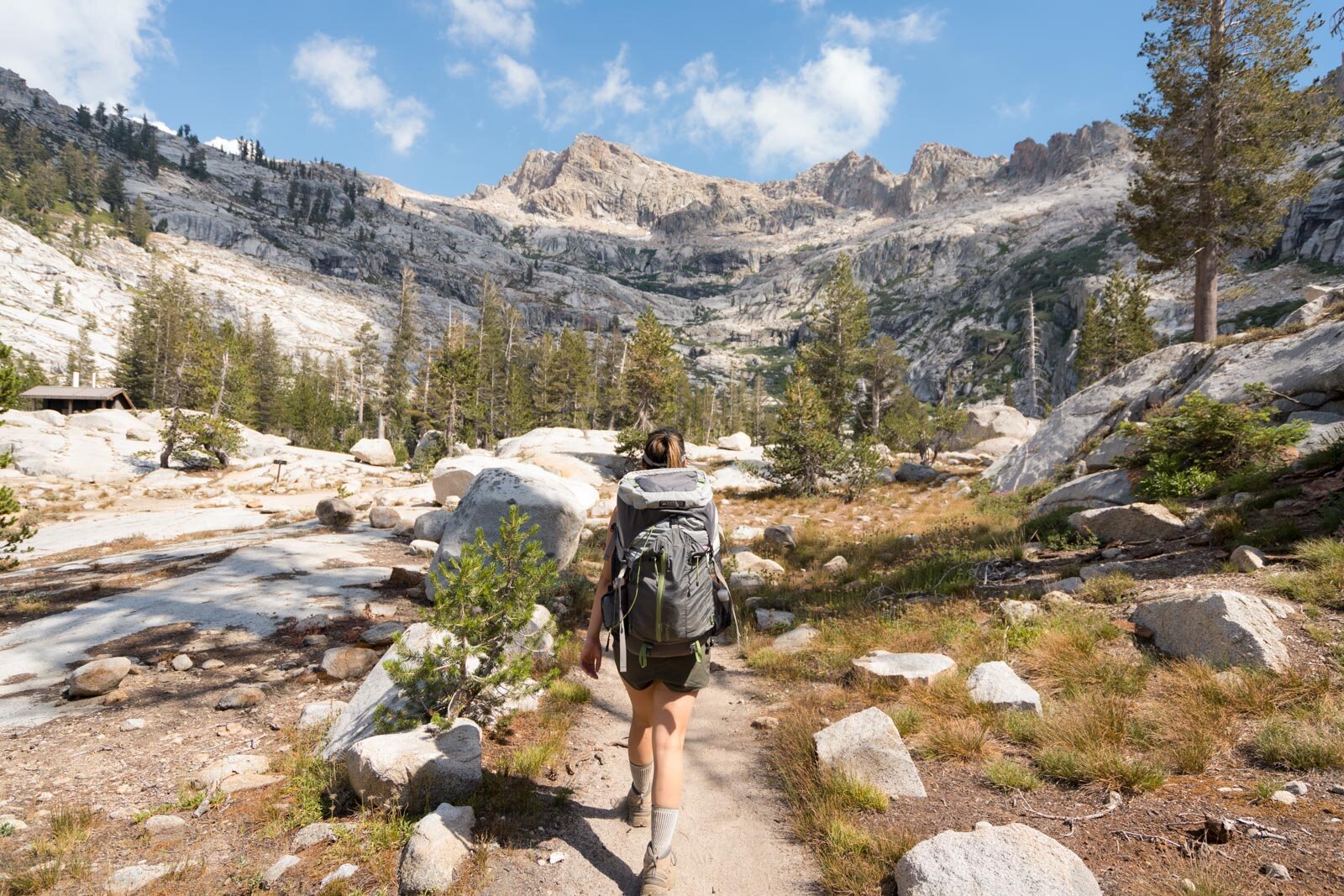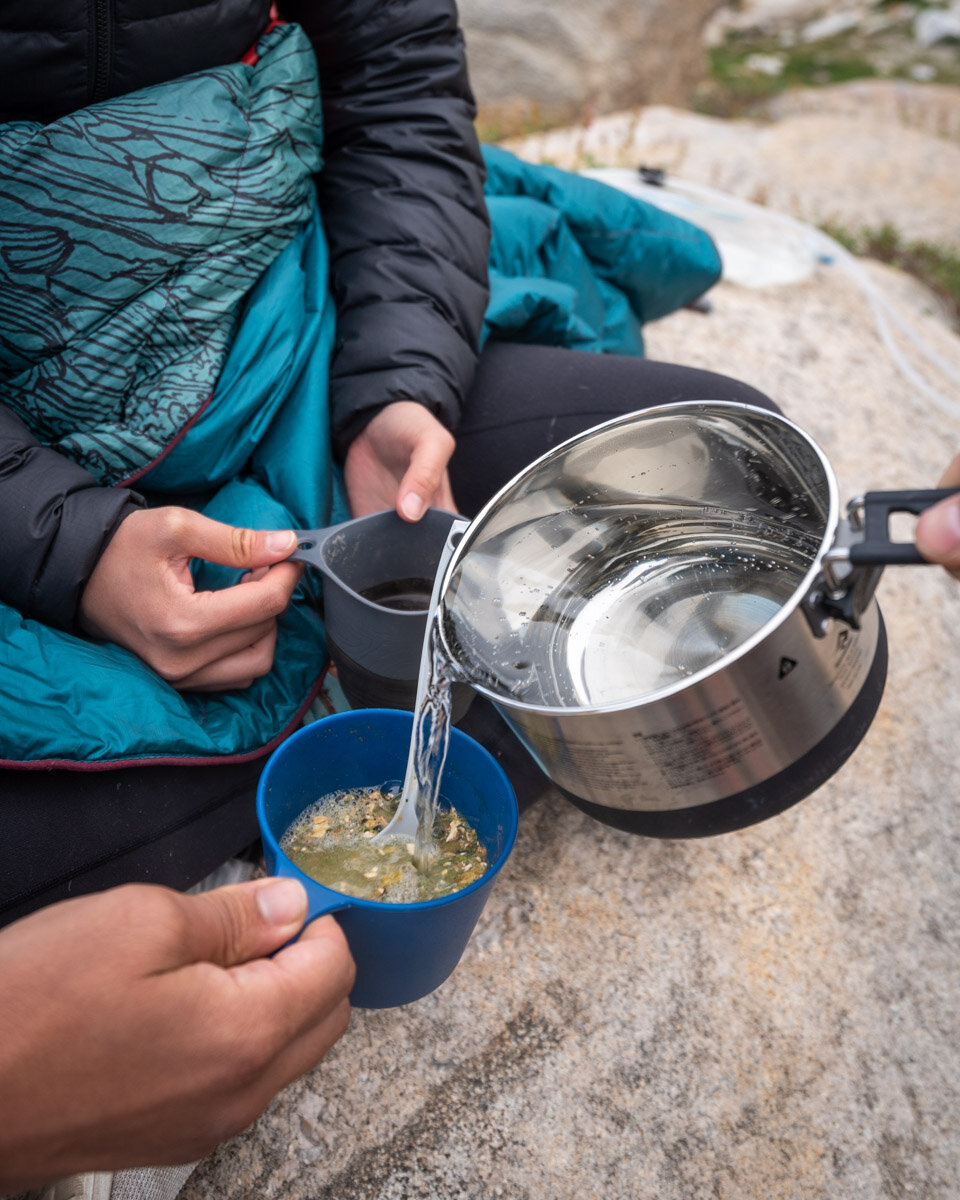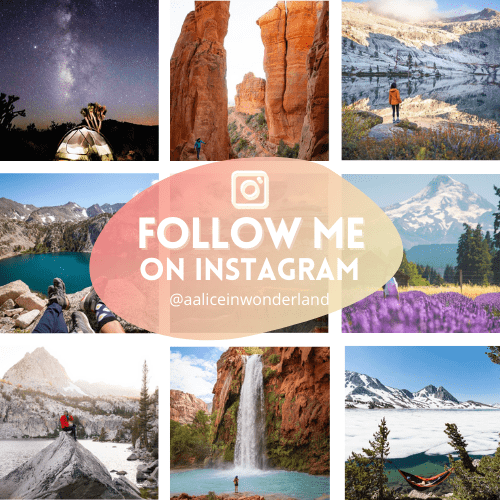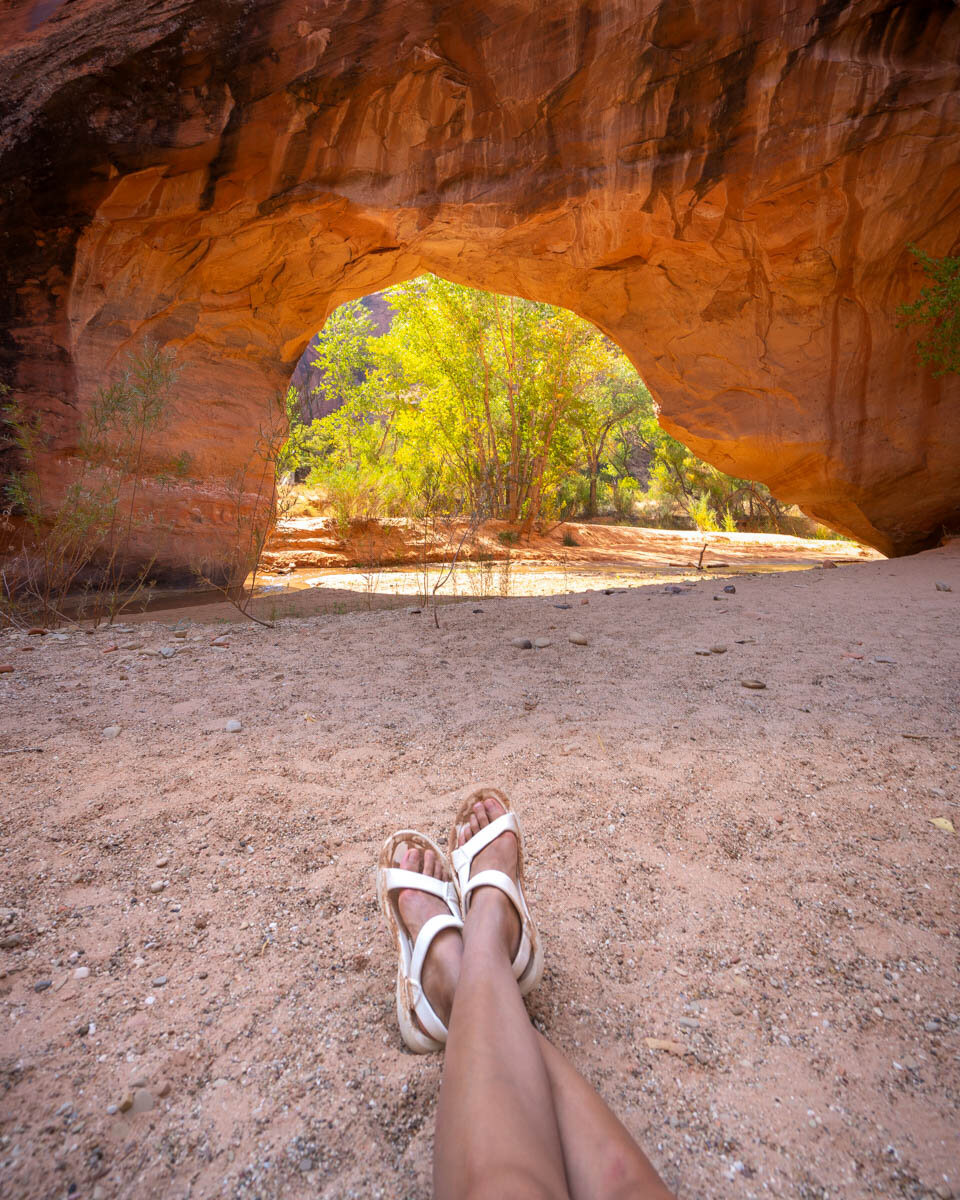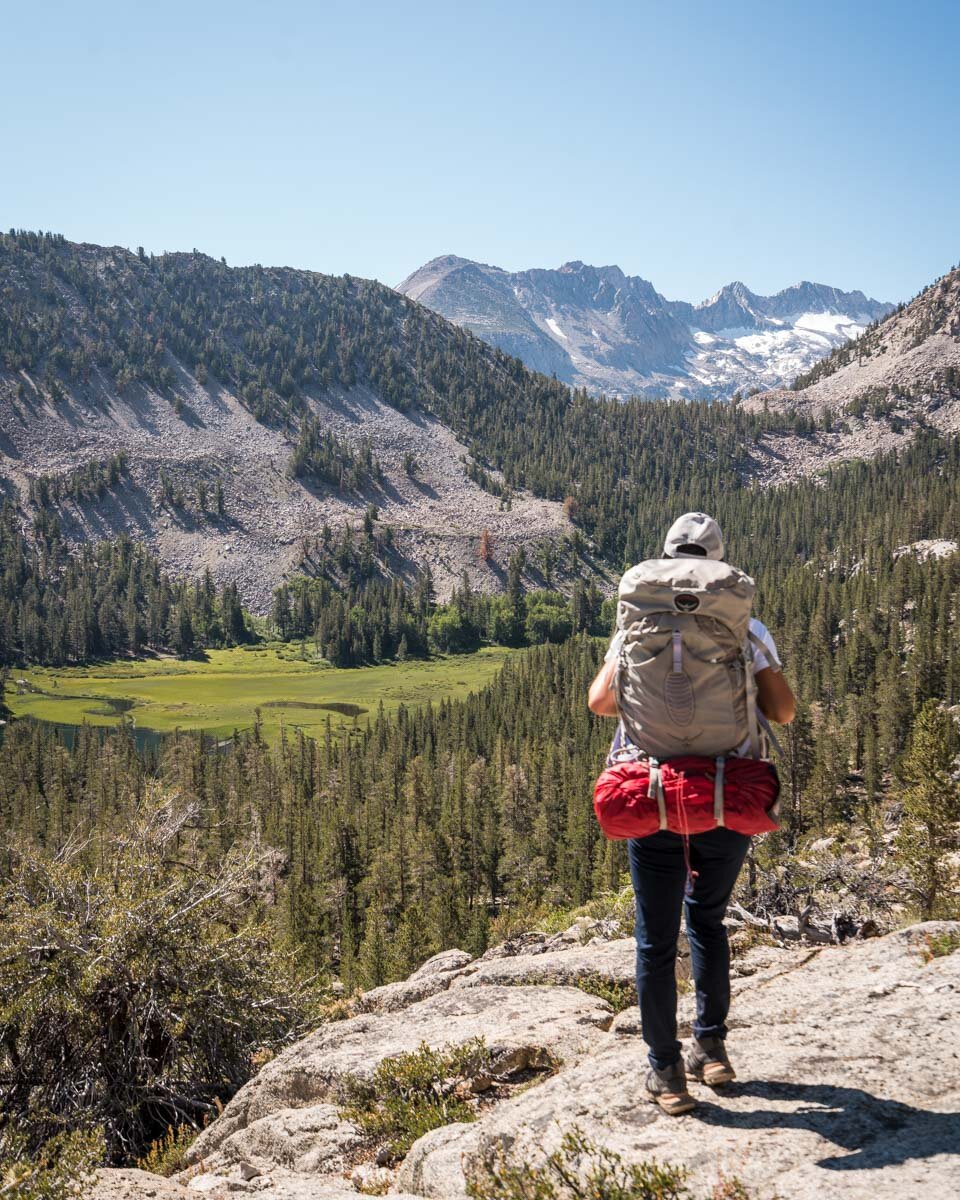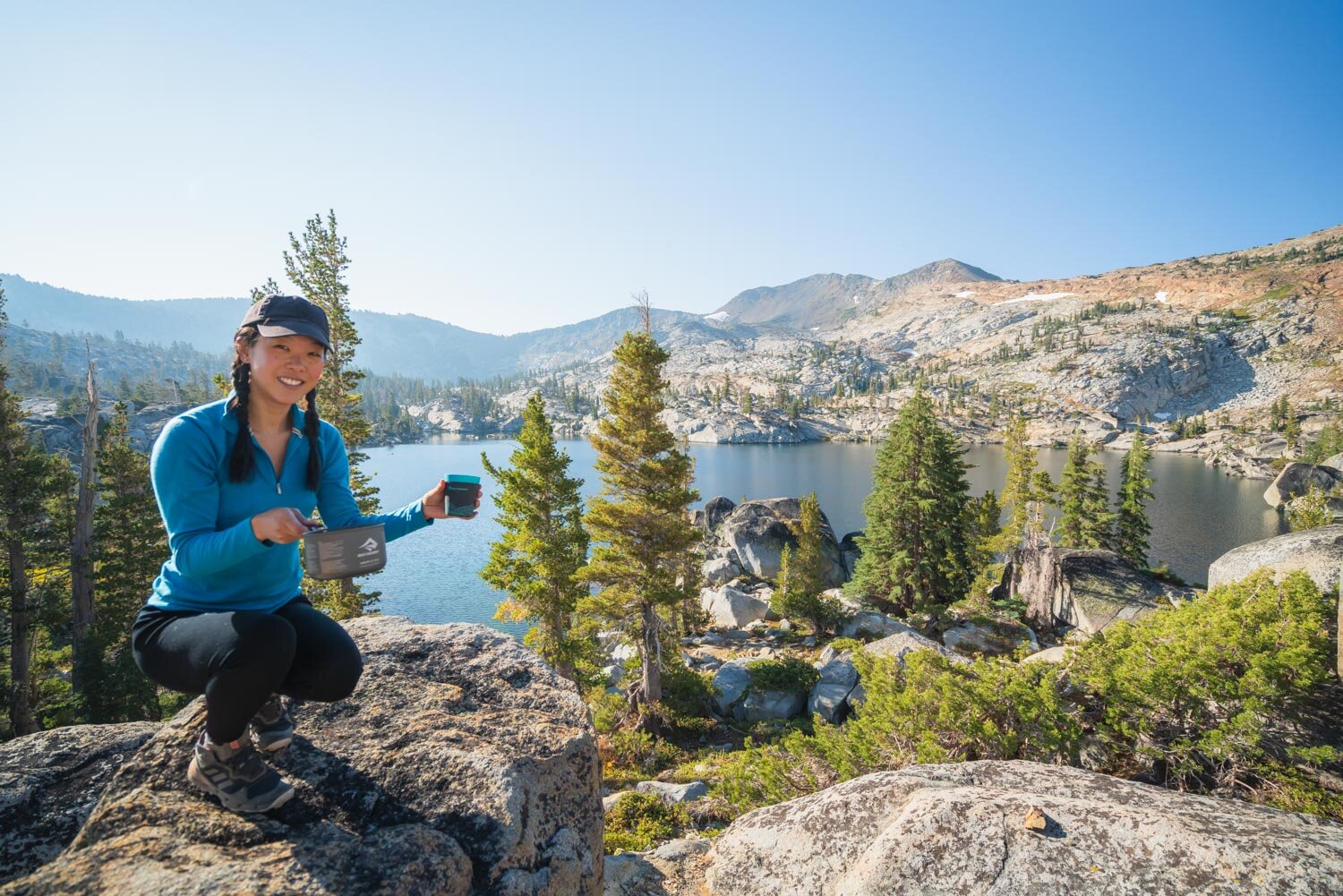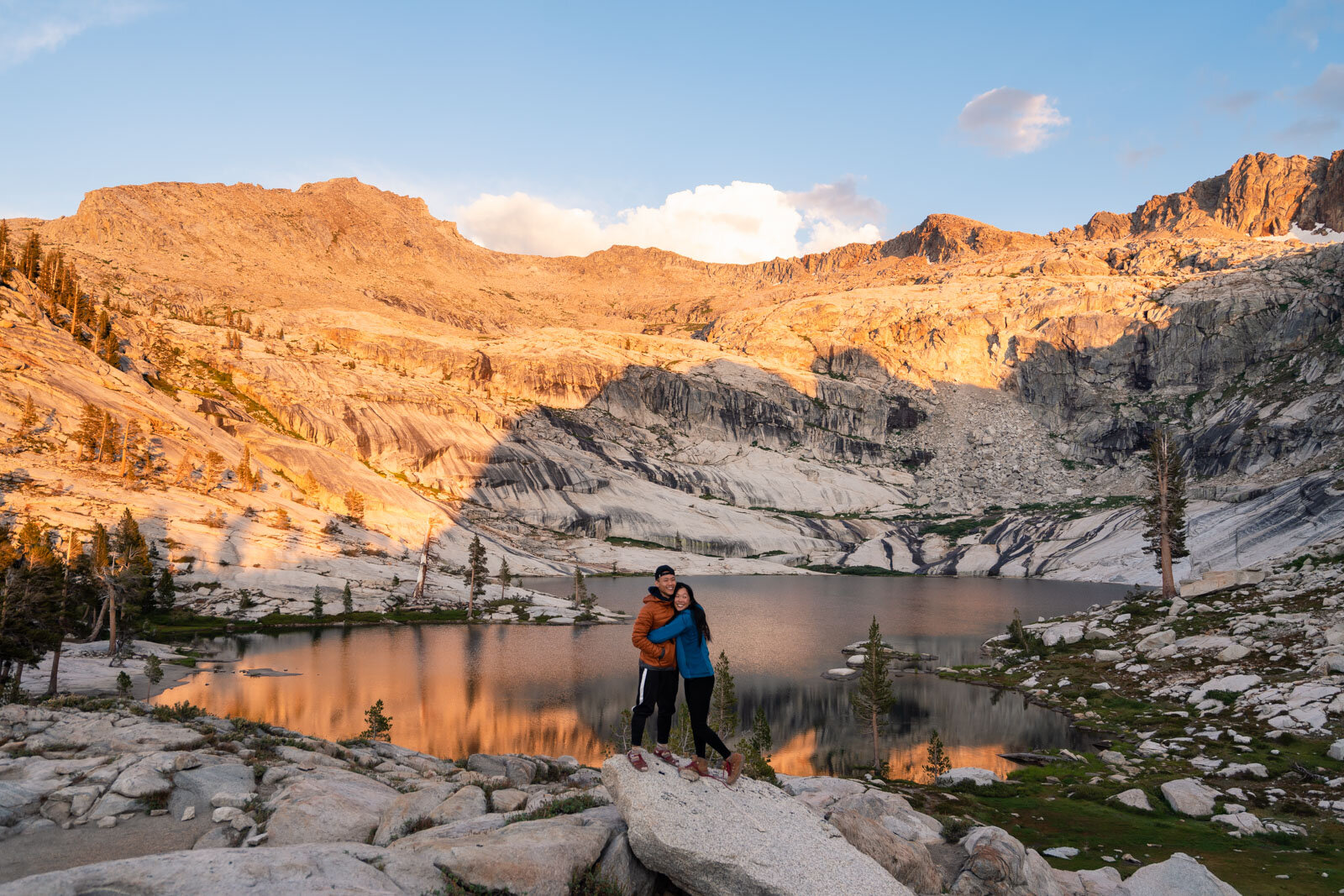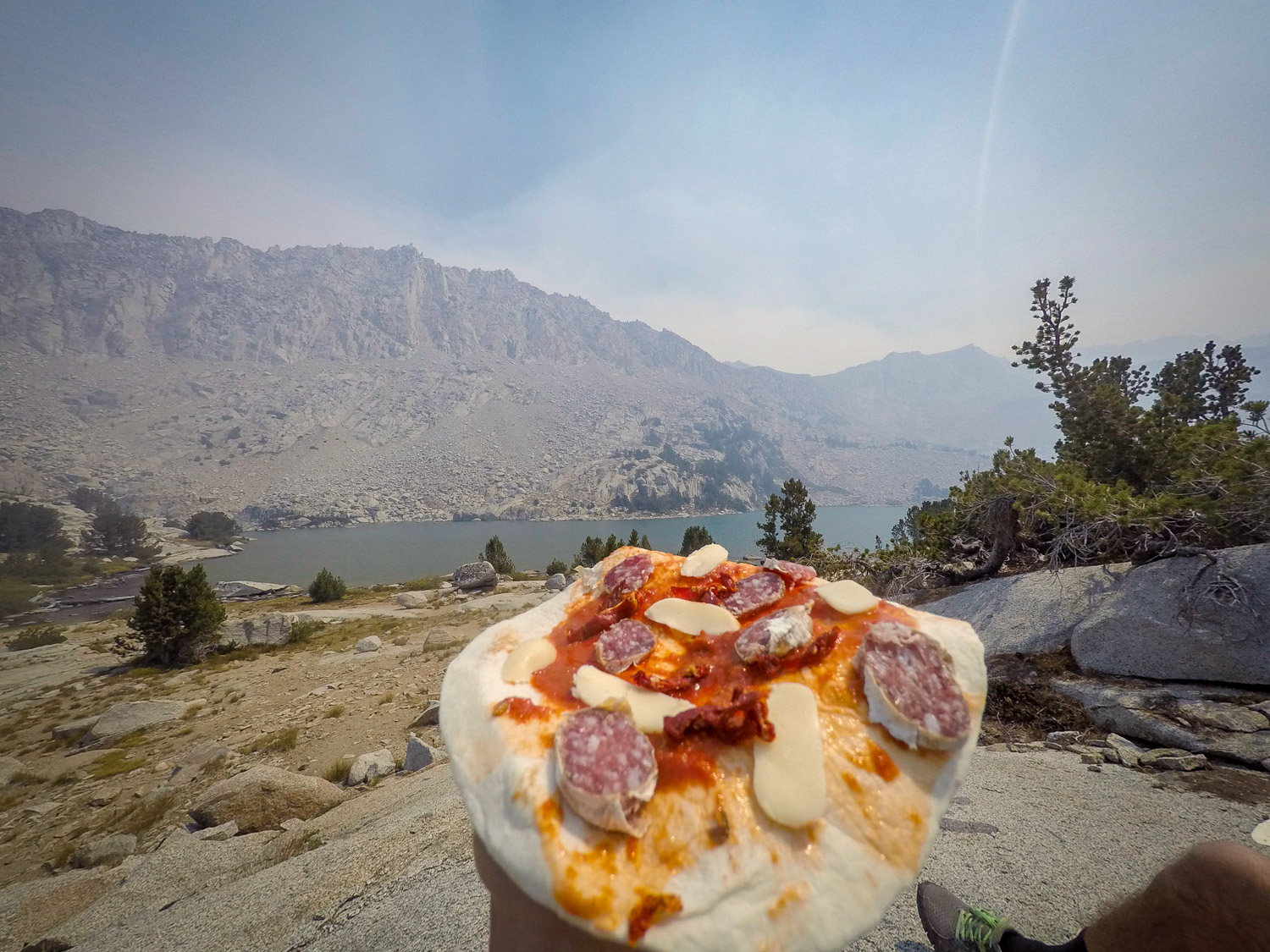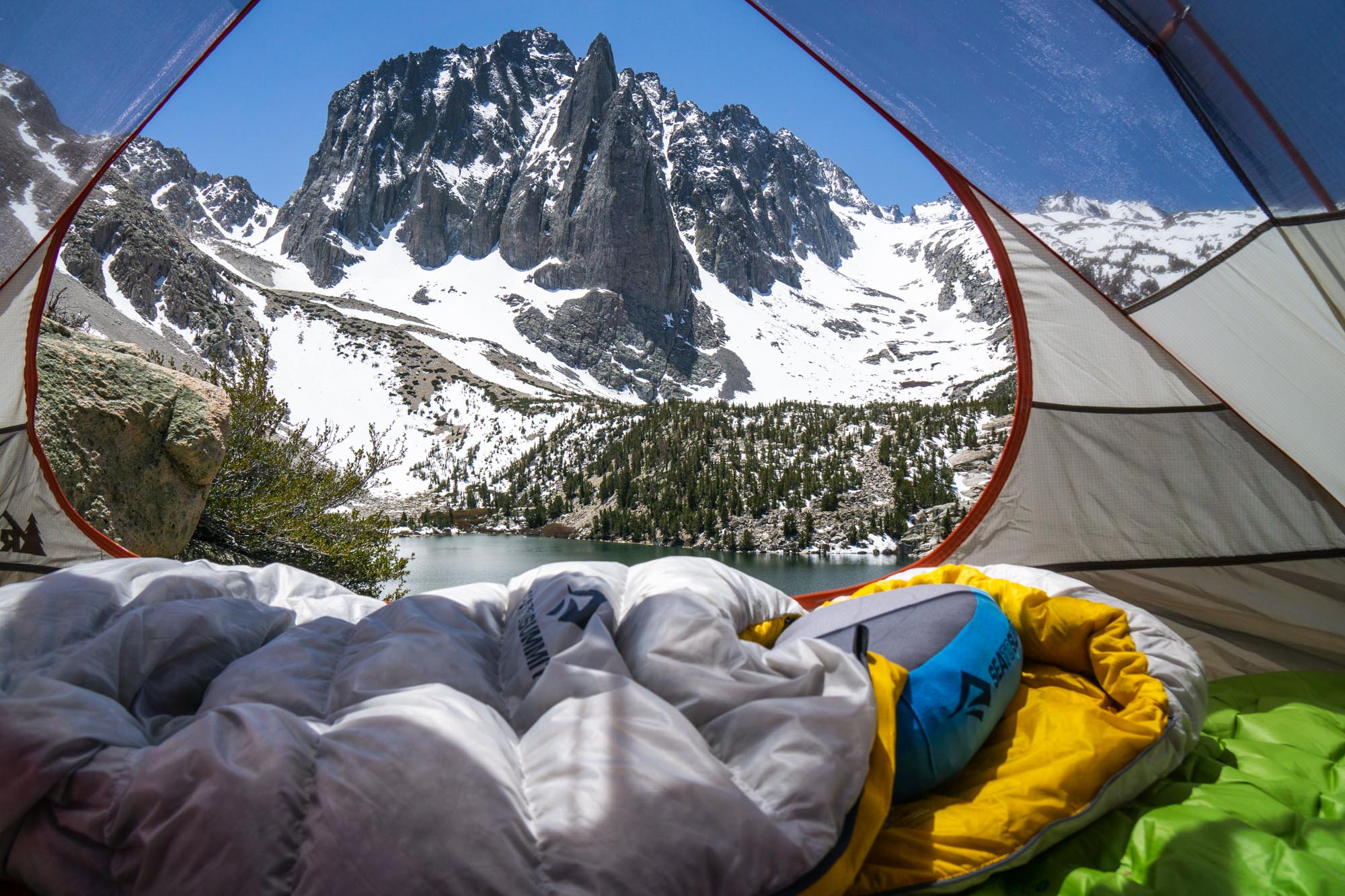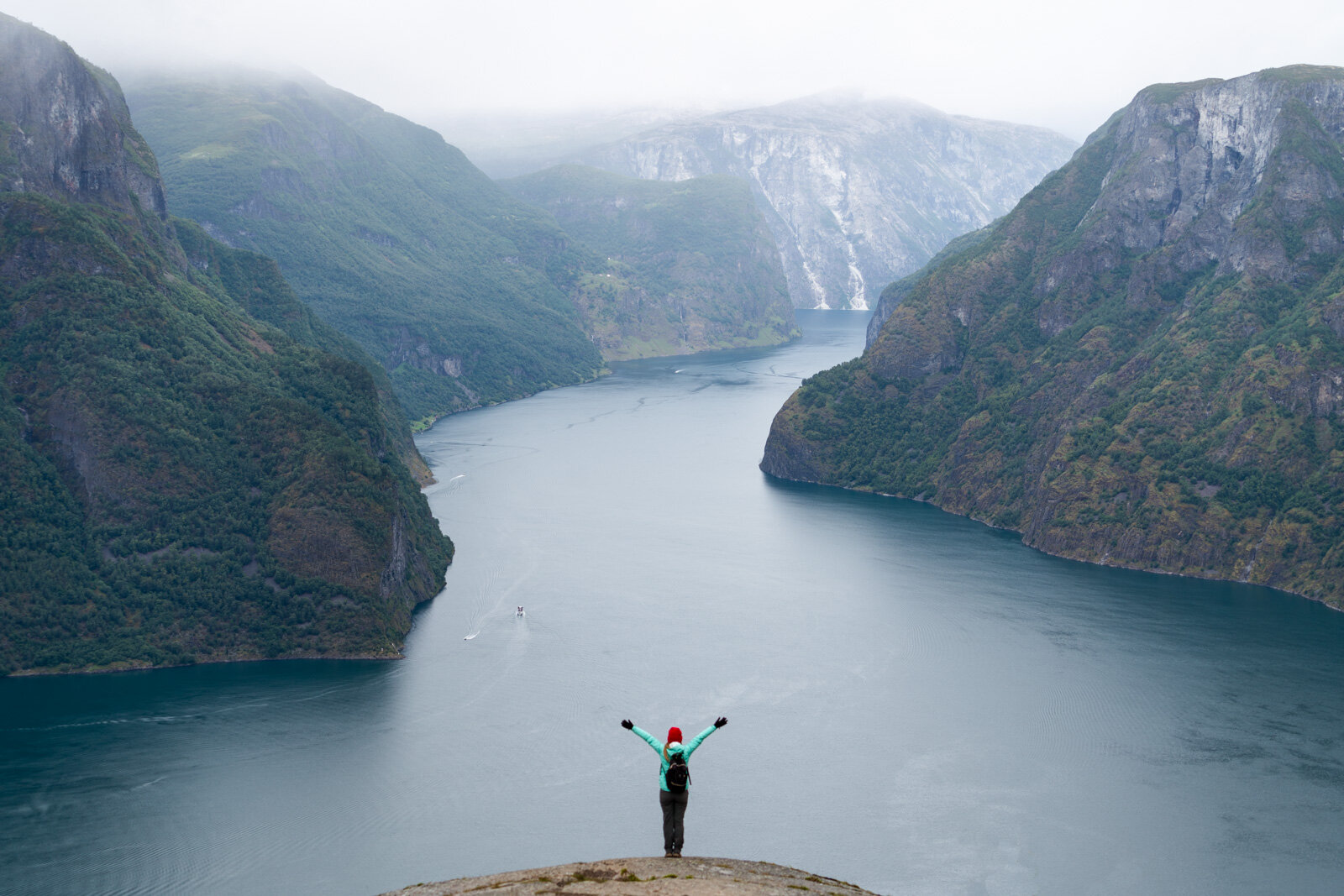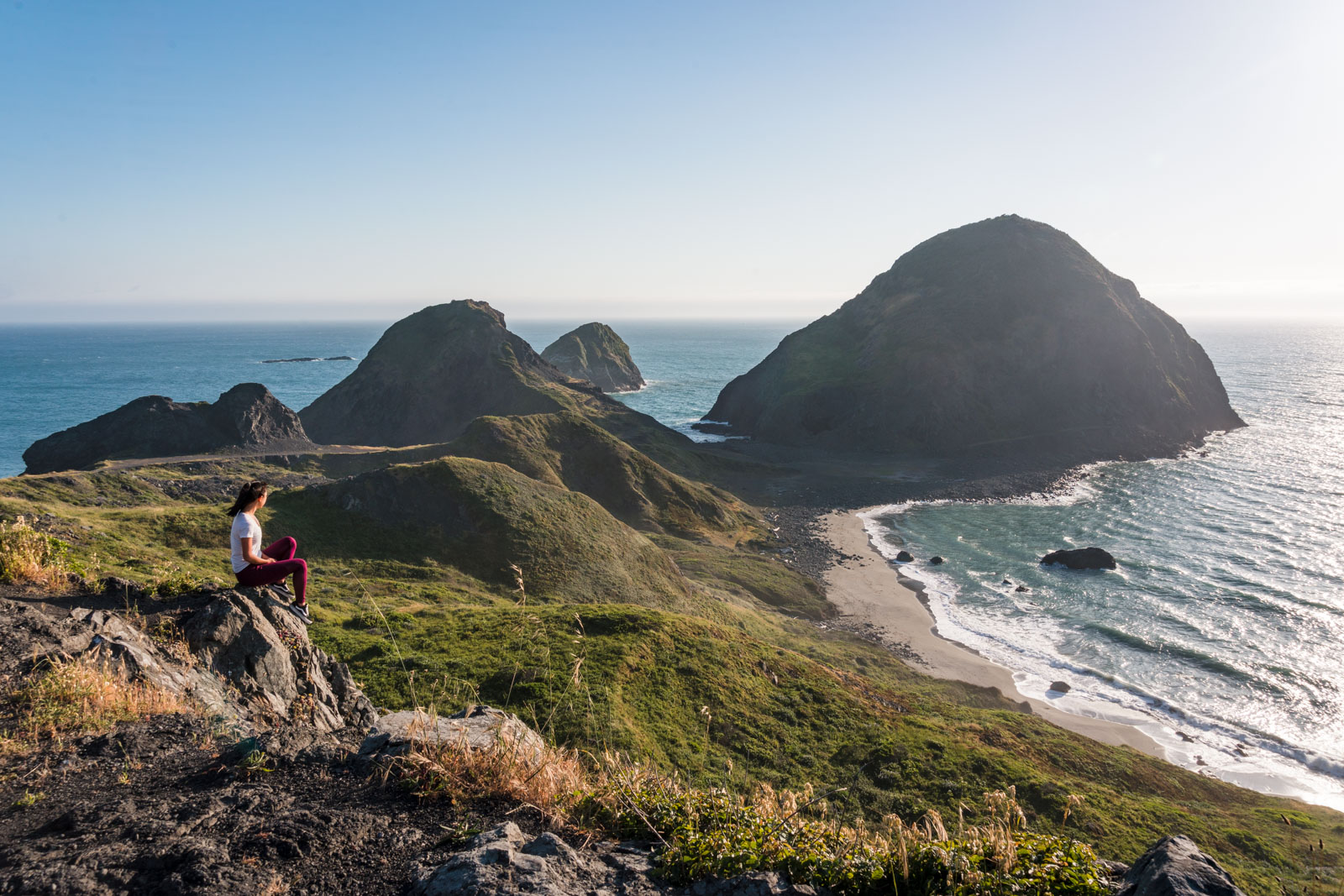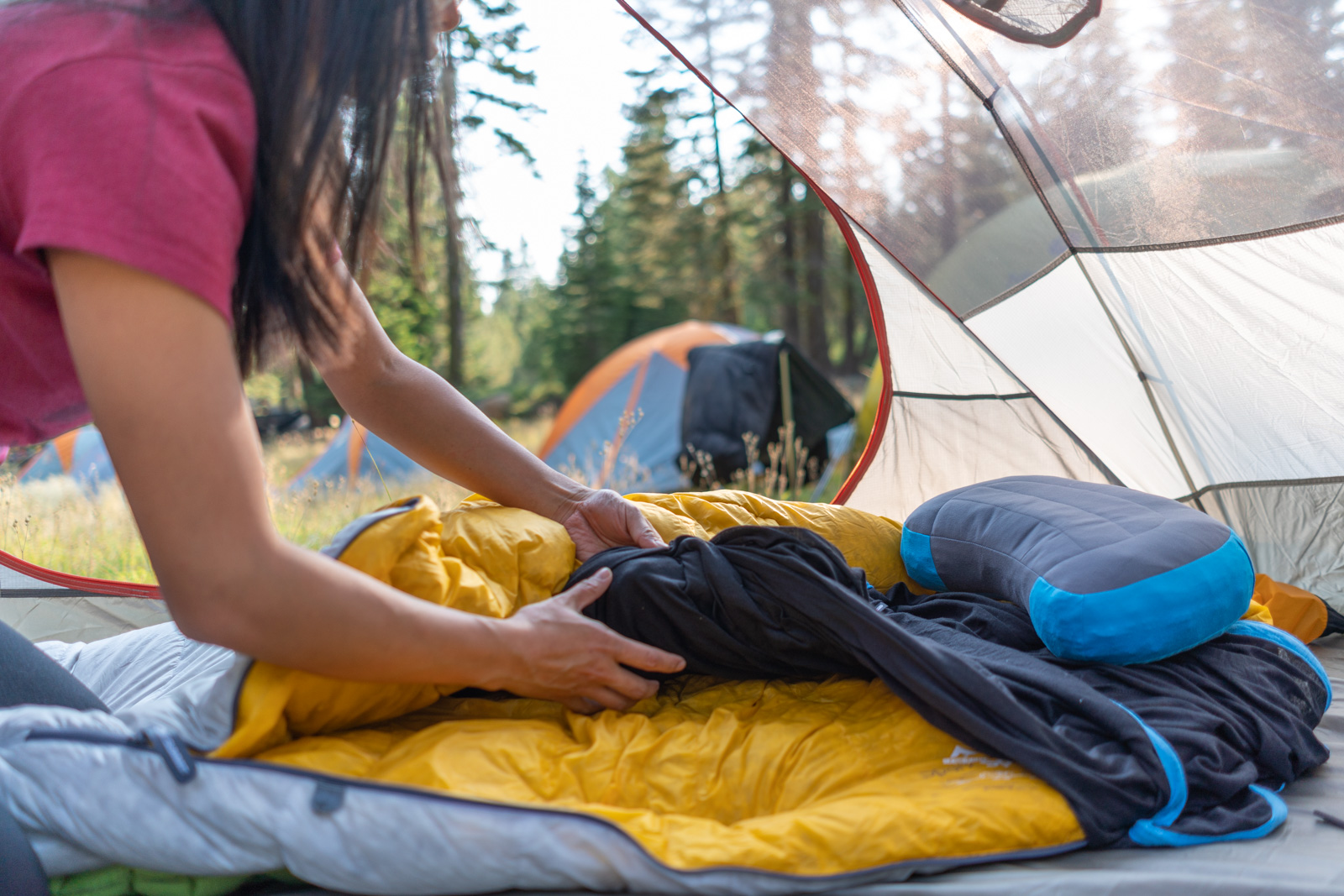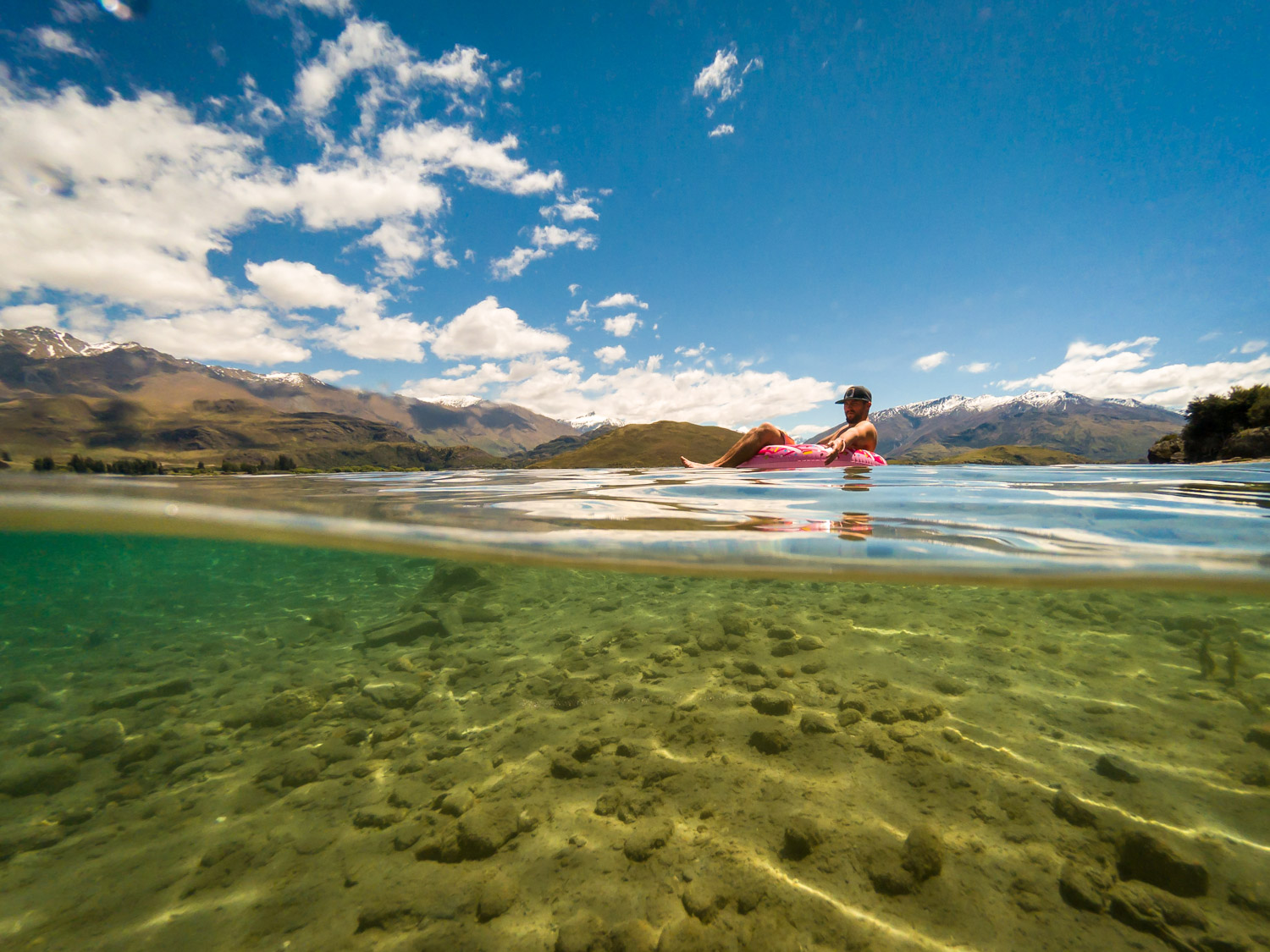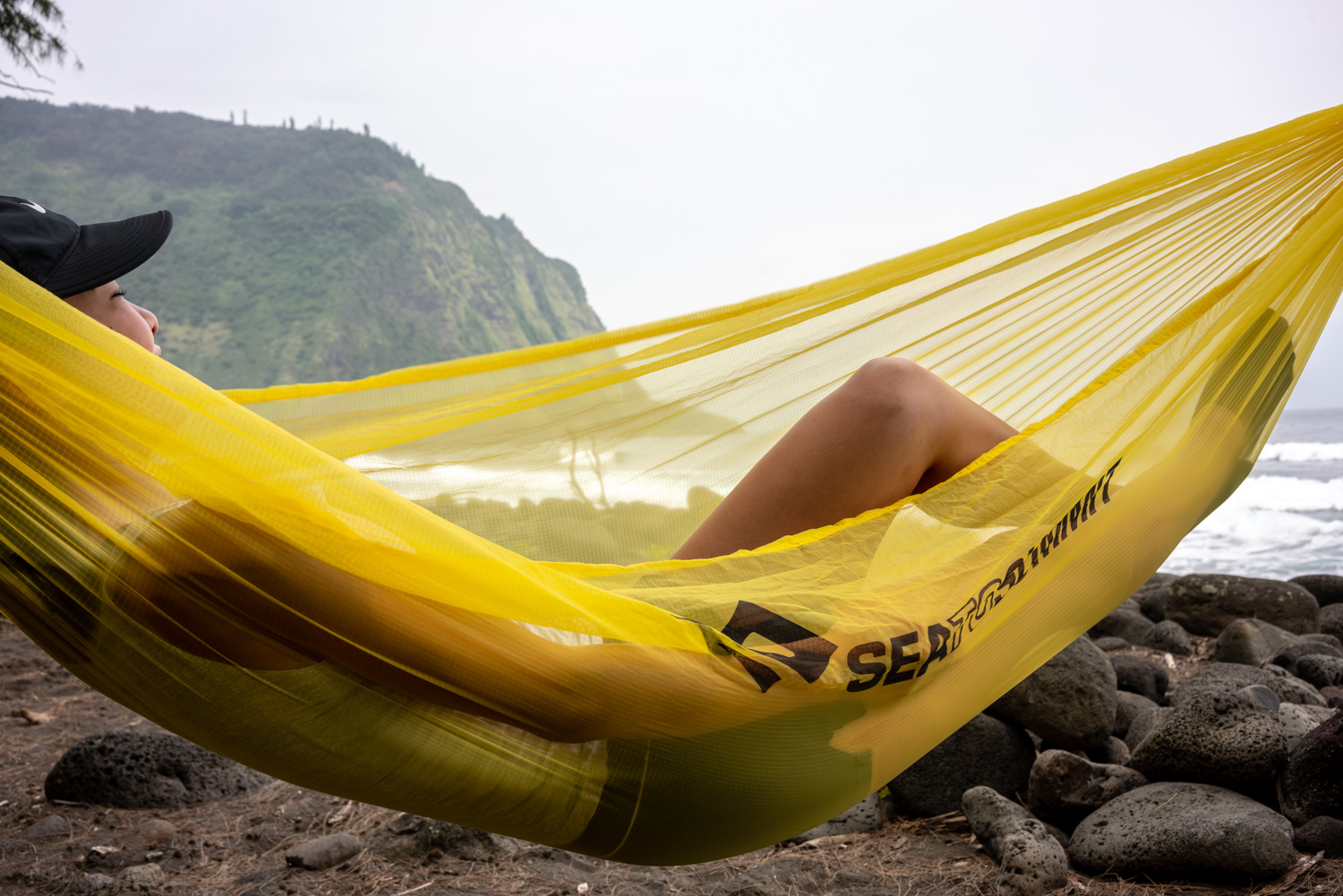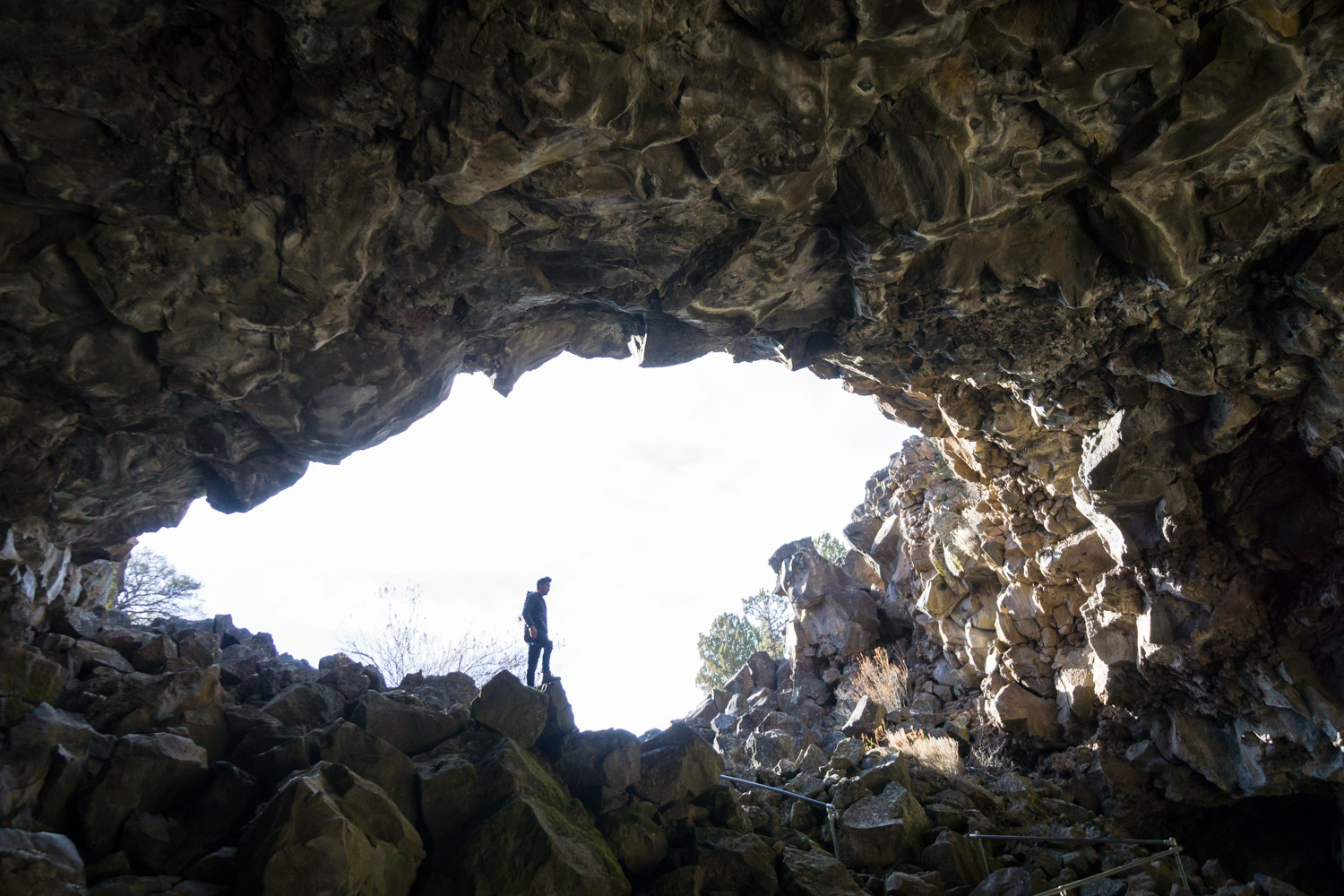Here I’m sharing everything I pack for a weekend backpacking trip. Feel free to use it as a complete packing check list or to get ideas and inspiration for deciding what to bring for a backpacking trip of your own.
I always love seeing what other backpackers are packing. People are so creative and have such well thought out systems. As a gear junkie, I’m on an endless mission to try new things and fine tune my own setup.
Click here for a list of all my current favorite outdoor gear
When I first started backpacking, I also started out with just the essentials, buying used and borrowing things. Since then it’s been a continuous journey of upgrading my gear and trying out lots of different things, and that’s just part of the fun! You don’t need to spend a ton of money to get backpacking, I wrote a blog post here on how to save money on gear.
About my pack style
Over the past ten years, I’ve really been able to fine tune exactly what works for me. Most of the trips I take are on the shorter side (one to two nights), and for these trips I’m looking for comfort and don’t mind carrying a little extra weight, since I’m usually not covering tons of miles in just a single weekend.
I did write a blog post about what I packed for the High Sierra Trail, which is what I would typically pack for longer trips up to a week long.
Affiliate disclaimer: this article includes some affiliate links, which means I may earn a small commission on any purchase made - at no additional cost to you. As always, all opinions are my own. Thank you for supporting the work I do to keep creating meaningful content like this for you!
Basic Backpacking Essentials
These are the items you should have in their most basic form for any trip into the backcountry. As simple as the basics might seem, you should always be prepared for anything Mother Nature might have in store for you!
Tent - out of the three tents I own I usually opt for the MSR Hubba Hubba for weekenders for its nice balance between being light weight and livable.
Backpack - for all trips, short and long, I use my trusty and comfortable Osprey Aura 65 since it can expand or pack down.
Boots - usually my Danner boots for these shorter, less rugged trips.
Sleeping bag - this will depend on the season and anticipated night time temperatures, but I will usually opt for a warmer bag rated for 21-30F even in the summer (you’ll never regret being too warm in the mountains!).
Sleeping pad - I like this one that doesn’t require blowing for inflation, and it is more comfortable and less crinkly than my ultralight option.
Stove - honestly I’ve found that most stoves work to my liking regardless of their price. I’ve been using an older, discontinued MSR version for years.
Water filter - this one by Platypus is probably my favorite piece of gear I own. I’ll never go back to pumping water ever again. The bladders have a high capacity, so it’s great for groups and even doubles as a camp sink when hung from a tree.
Utensils - as much as I love to cook at home, to avoid doing dishes, and mostly out of laziness 99% of the time I’ll go with dehydrated meals in the backcountry. This long-handled spoon is a necessity for not getting food on the back of your hand while eating.
First aid kit - I always pack a small first aid kit (did you know medical kits are FSA eligible? Score!) for any emergencies or booboos. I’ve amped mine up with moleskin, blister bandaids, sleeping pad patch kit, a small nub of duct tape, and an emergency blanket.
Knife - I’ve used the same Spyderco knife for 10+ years! Light, compact, and durable.
Water container - I use a 3L reservoir since I find having a tube encourages me to drink more water while hiking, but a Nalgene is also a budget-friendly and light option.
Headlamp - it’s super important to also know where it is at all times for quick access. This one has 400 lumens, and I also bring an extra set of batteries (these rechargeable ones) just in case.
Map/GPS - I use my phone with several different apps. I download offline Google maps, and I also use Gaia and Caltopo to track my hikes (plus a battery pack for longer trips)
Clothes - for a weekend alpine trip I will typically pack a fleece jacket, down jacket, and rain jacket for outerwear. Then always my wool base layers, one warm pair of socks for sleeping, and a pair of leggings or hiking pants. Don’t be afraid to rewear clothes, socks, sports bras, etc! See my main gear page for my current favorite women’s hiking clothes.
What I always pack
These items aren’t commonly regarded as necessary as the items above are, but these are items that I will always pack for my shorter trips since they make my time in the backcountry comfortable and more enjoyable.
Pillow - as a side sleeper, this super light and compact inflatable pillow is essential for getting a good night’s rest in the outdoors.
Sleeping bag liner - I’m a cold sleeper, so this liner not only gives me a couple degrees of warmth, but it also protects my bag from any oils, lotions, or dust on my clothes or body that could seep into the sleeping bag over time.
Hat/sunglasses - you’re more prone to sunburn at higher elevation, so be sure to pack protection. Don’t think your eyeballs can’t burn too, because I’ve seen it!
Toiletries - for me this means sunscreen, chapstick (favorite is Jack Black), contact solution and case, mini toothbrush and toothpaste, and a little bit of lotion.
Mug - what is a morning in the backcountry without a hot drink in hand? I either bring a collapsible one or if I have more room, this insulated one.
Trowel & toilet paper - I use this ultralight one and pack some toilet paper and a couple ziplocs to pack out any used toilet paper.
Snacks - snacks are crucial for long hikes, and I must admit I am a food-driven individual. Some of my favorites for the trail are sour candy, protein bars, and trail mix. If I’m going for an overnighter with friends, I might even include boxed wine and … a mini charcuterie spread! Always a crowd favorite. I cover backpacking food and snack ideas more in this blog post.
Location-specific gear
Bear can - California and many other mountainous regions in North America require the use of bear canisters in some areas. Be sure to know the regulations for your area. I have a full-size one for 2+ people and a mini one for individual/overnight use, and I like that these are clear so you can see inside. You can also rent from some visitor centers and outdoor gear stores like REI.
Bug repellent/head net - depending on the season and location, mosquitos can really put a damper on any trip. I like to treat my clothes with Permethrin, and also bring bug repellent and even a head net for the more extreme cases (early season destinations with water).
Optional gear to consider
Depending on the type of trip, there are several items that I might want pack. These are by no means necessary, but they are items that I occasionally pack on shorter trips and greatly enjoy having.
Trekking poles - I’ll bring these light poles if the terrain is particularly rocky or uneven, or if I’m trying to hike longer distances than usual in a day.
Packable daypack - if my weekend route involves a base camp for more than one night and doing a day hike with a lighter pack, I’ll pack this super light and compact backpack that fits in the palm of my hand.
Hammock - if I know there will be lots of trees and down time, I love this ultralight hammock to kick up my feet and relax near camp.
Camp chair - an alternative to the hammock when I know I’ll want to be relaxing a lot but not sure if there will be trees to hang a hammock. I like to pack this budget-friendly one particularly on desert or sandy trips.
Microfiber towel - a packable and quick dry towel is a must if I can get in the water.
Camp sandals - after a long day of hiking, wearing sandals is such a luxury to take a break from boots or to go swimming in. I love something really light that can clip onto the outside of my pack like these Teva sandals.
Camera gear
Camera setup - one lens is plenty enough for me, and my current favorite pairing is the Sony a7Riii + 16-35mm wide angle zoom lens. Check out the rest of my favorite camera gear here.
Camera clip - this nifty clip attaches to my backpack strap and allows me to hang my camera from my shoulder so that I can hike and shoot at the same time, which is something I often do.
Lens cap bungees - I’ve dropped too many lens caps in rock crevasses and streams to count, so you can bet I have one of these lens cap keepers on each lens.
Lens cleaner pen - being out in the elements means a lot of dust or water. This compact tool helps keep my lens clean and clear.
Don’t be daunted by this long list. As long as you have some variation of the essentials, you’re ready to go backpacking! The rest is just fluff. That is what I love most about backpacking, it truly is empowering to see how little you need in your life to thrive in the outdoors.
Do you have a favorite item to bring backpacking? Let me know in the comments!

